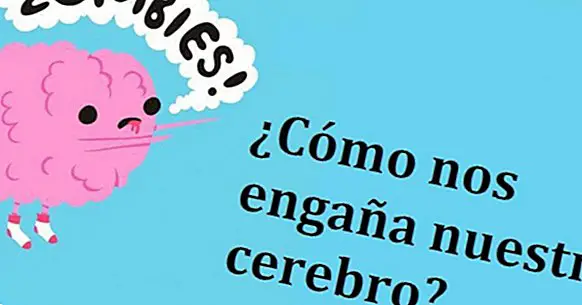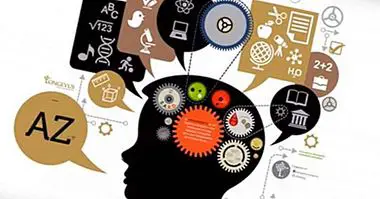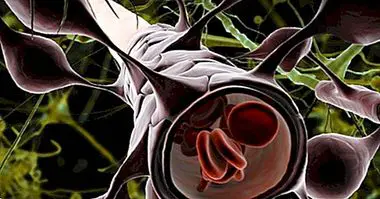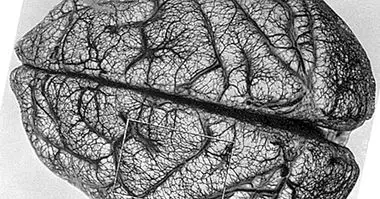The lying brain: do we really know why we do what we do?
The brain is at the base of everything we are and do.
It is the seat of our personality, responsible for our emotions, and how we feel during the day; but it is also the organ that allows us to chew gum, shoot a ball, go out for a coffee with a friend, read a book, plan where we will go on vacation, prepare a practical work for college, fall in love, choose a church to marry , and thousands and thousands of etceteras. From the seemingly smaller and trivial action to the most sophisticated mental processes .
In order to do all this, it would be logical to think that the human brain is a perfectly prepared organ to rationally and consciously process all the information that comes from the environment. But nevertheless, the brain does not always work on the information that we process consciously , and there are even times that the mental processes that guide our behavior generate lies spontaneously.
Lying brains and cheating by short circuit
The first thing we need to know to understand better why the brain does not have to work from the objective information that reaches us through the senses is that the brain is divided into two large structures that are known as the cerebral hemispheres. .
The left hemisphere and the right hemisphere are, in appearance, morphologically equal, as if one were the mirror image of the other. They are found on both sides of the head, slightly separated by an external fissure, but connected inside by a thick bundle of nerve fibers called the corpus callosum.
Left hemisphere: the rational and analytical part
The left hemisphere is the seat of analytical understanding, numerical understanding and logical analysis . Here, too, is the region responsible for language.
Right hemisphere: non-verbal and emotive information
The right hemisphere rather deals with processing the non-verbal and affective information of the language , such as the tone of the voice, the rhythm and the emotional meaning of what you are listening to.
The corpus callosum is responsible for complementing both hemispheres
As you can see, these differences are complementary. The two hemispheres make up a whole; the brain works as a unit , and it is precisely the corpus callosum that allows the communication and permanent interaction between both structures. Another fact that is not minor: the left hemisphere controls the right side of the body, and the right hemisphere controls the left side.
Let's see a simple example. If we close right and observe the photograph of a tulip, the stimulus travels preferably to its left hemisphere, and from there it crosses to the right hemisphere through the corpus callosum. In this way, our brain perceives the image in its different aspects but in an integral way. You get a thorough understanding of what you are observing; we can assure without a doubt that it is a tulip. We are able to describe it and even remember everything we know about that flower .
But ... what does this have to do with deception?
A few years ago, a group of scientists noticed a series of strange phenomena in patients diagnosed with epilepsy and who had recently undergone an operation known as epilepsy. ablation of the corpus callosum .

Epilepsy reveals something important
Of course, there are different types of epilepsy and of different magnitude, most of them controllable with medication. But in severe cases, when the frequency and intensity of the crises are very high and all possible treatments have been exhausted, there is a last resort .
It is a surgical intervention in which the corpus callosum is sectioned, leaving the cerebral hemispheres permanently disconnected. Of course, this does not cure the disease, but at least it prevents the epileptic seizure that starts in one of the cerebral hemispheres from assaulting the hemisphere of the path in front through the corpus callosum.
But it turns out that the procedure leaves some unsuspected sequels, a series of side effects as strange as intriguing. When patients were asked about the reason why they had made a certain decision, and depending on which hemisphere processed the information, they could lie openly in their answers, and what was worse, they seemed not to be aware that they were doing it .
Some examples of 'neurological lies'
If an ordinary person is asked to perform a specific action, such as closing his eyes, and then being asked why he has done it, he will naturally respond that he has simply complied with the order given to him. .But that expectable response, sincere and spontaneous, changed drastically when the neuropsychologist bent over the recently operated patient and whispered the order to the left ear, and then asked him for the reasons for his behavior, but in the right ear.
Then, To everyone's surprise, the patient gave a false answer .
"My head hurts a little, and I need to rest my eyes," he could calmly say, with the assurance of someone who knows that he is honest and is telling the truth.
"Raise an arm," could be ordered in the left ear. "Why did he do that?" He was later asked in the right ear. "Well, I'm a little stressed and I needed to stretch," the patient responded as smoothly as possible.
What was happening?
Let's review. The information collected by one of the sides of the body travels to the contralateral hemisphere, on the opposite side. If certain data enter through the left eye or ear, it travels to the right hemisphere, and then integrates with the rest of the brain through the corpus callosum.
We also know that language is a well-lateralized function, and that it is located, to a large extent, in the left hemisphere. It can be said, simplifying the subject a bit, that the right hemisphere of the brain is a silent hemisphere .
If we combine these two knowledge, we have the answer to the problem.
When the hemispheres are disconnected from each other ...
If the bridge connecting the two halves of the brain is dynamited, the epileptic crisis is restricted to one of the hemispheres. But the same will happen then with any information that enters through the senses .
Any instruction the experimenter could give the patient was trapped in the right hemisphere. That is, that this side of the brain knew the real reasons for the performance of the requested action, but when the patient was asked, he could not verbalize them, since the language areas are in the other half.
As a counterpart, the left hemisphere can talk, but it does not know what is happening. He has followed the behavior performed by the individual, since when he touched the tip of his nose or stood on one leg, both eyes monitored what he was doing, although he could not account for the reason.
However, here comes the surprising thing, far from admitting with humility its ignorance, of accepting that it does not have the answer for everything it observes, the left hemisphere ventures to give an explanation , which in principle may sound reasonable, but in reality is far removed from the real reasons that gave rise to the behavior.
"Why did you start singing?" The patient was asked after giving the order to the right hemisphere.
"Suddenly that melody came to mind," answered the left hemisphere. Or: "I think I feel especially happy today."
To the question: "Why are you scratching your head?", The patient with the split cerebral hemispheres looked surprised at the man in the white coat who is evaluating him and replied, with a certain disdain: "Because it stings me, what else? could be?".
Beyond the anecdote
In the light of these discoveries, it is legitimate to think that one of the many functions of the left hemisphere is the interpretation of reality. The justifications that these people make of their actions are the result of the brain's efforts to find meaning in what it is observing.
The human brain has evolved to help the individual to understand and adapt as best as possible to the complexity of a changing world. For this reason, one of its main functions is to interpret reality, formulate and wield theories that can explain the vicissitudes to which we are exposed during the course of our life.
Sometimes these theories are true and conform well to reality, but everything seems to indicate that Most of the time, these are just speculations that are nevertheless taken as valid by the person , since its acceptance contributes to create certainty in a world full of mysterious phenomena. Thus the feeling of control over the uncontrollable appears.
In this way, the left hemisphere is a tireless manufacturer of rationalizations, illusory arguments created to satisfy one's expectations and make this world a little more predictable. And what is valid for external stimuli, that is, everything that enters through the sensory channels, is also valid for internal stimuli, that is, thoughts.
Realities created to measure ... or simply lies
The brain collects information from the world through the five senses, but it is also true that it does not need sight or hearing to generate thoughts. And thoughts, in addition, are the raw material for mental representations, that accumulation of explanations with which we justify everything we are and do, both to ourselves and to others.
We have an explanation for everything but ...Is that the real explanation? Or is it just one possible interpretation among so many others?
Why do we buy a brand of jam and not another? Why do we go to the cafeteria on the other block and not to the one on the corner? Why do we choose a two-door vehicle and not four? Why do we like Mozart and not Beethoven? Why do we prefer Mar de las Pampas to go on holiday instead of the sierras of Córdoba? Why do we get together with Fulana and not with Mengana? Why do we decide to study Law and not Medicine?
These are all questions that we can usually answer easily, but are our answers reliable?
We do not know very well why we do what we do , and what is worse, we disregard the external influences that could have pushed us to do this or that.
At other times, the exact opposite occurs: we overestimate factors that are hardly related, attributing them a weight or power that is not such. This is what often happens when we undergo a certain treatment, with a certain amount of positive expectations.
The simple fact of believing that a therapy will help us feel better about ourselves, or lose weight, or control the anxiety that afflicts us, makes us experience a much more important improvement than could be objectively realized. And the greater the time and money invested, the more convinced we are of the benefit obtained.
In conclusion
How can we be sure, after knowing these experiments, that the explanations with which we go through life are nothing other than the product resulting from a part of our brain willing to say everything and obsessed to argue about what we Is it happening?
Well, dear friend, now you know we can not take our own beliefs and thoughts too seriously , and this includes all those "certainties" about oneself and others.
The history of humanity gives an account of the disastrous consequences of letting ourselves be carried away by fanatisms and apparently unquestionable ideas. We must always try to keep in mind that our worldview, the way in which we see the world, is only a possible "interpretation", but not necessarily true or unique. To the extent that we allow ourselves to doubt and encourage ourselves to dive into questioning, we will slowly but inexorably approach the truth.




















